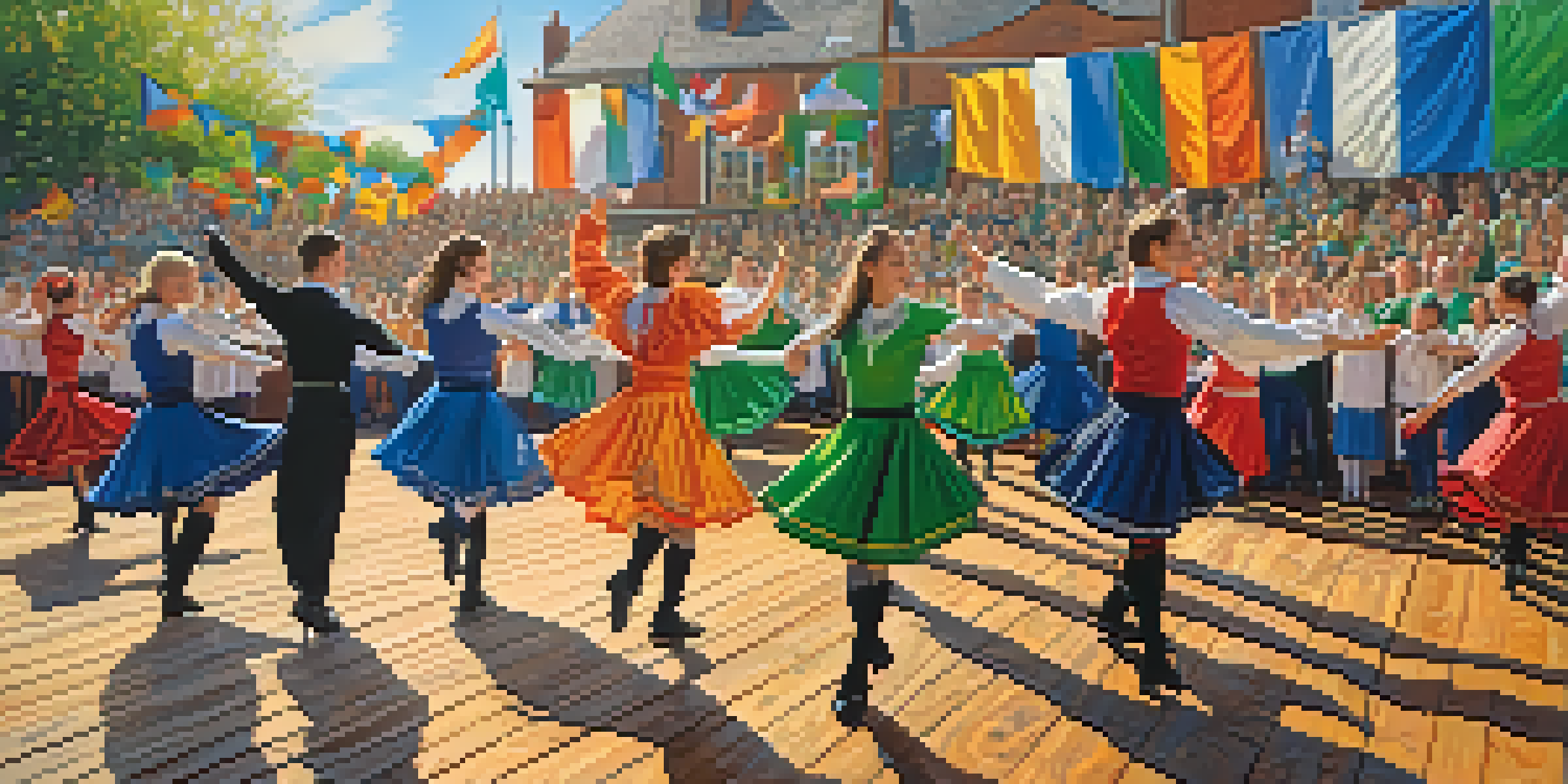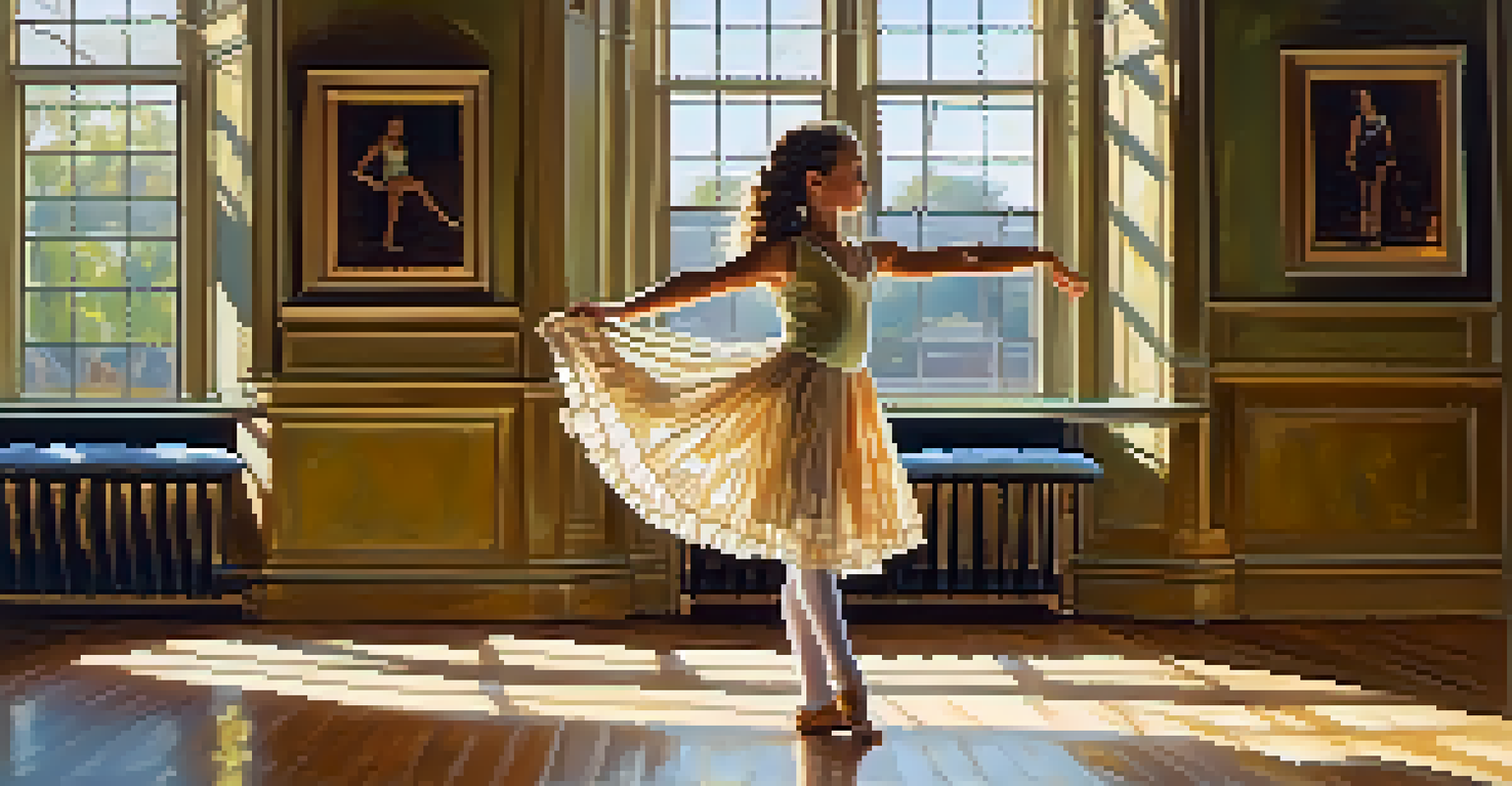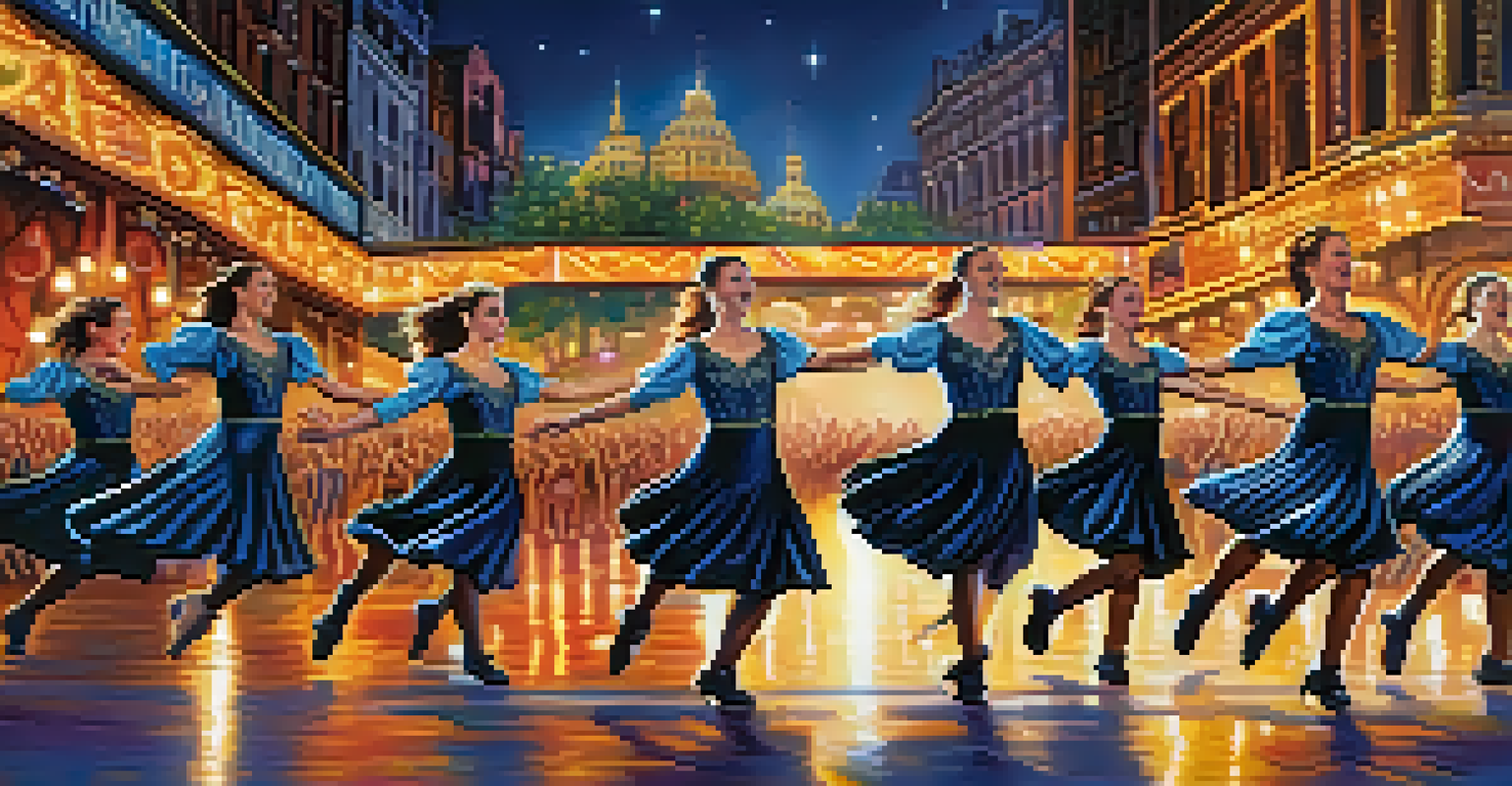Irish Dance: The Tradition of Riverdance and Beyond

The Origins of Irish Dance: A Cultural Tapestry
Irish dance has roots that stretch back centuries, intertwining with the history and culture of Ireland. Folk traditions, social gatherings, and storytelling have all played a role in shaping this expressive art form. It’s more than just dance; it's a reflection of community and resilience, often performed at celebrations and festivals.
Dance is the hidden language of the soul.
In the early days, dances were simple and performed in casual settings, often accompanied by traditional music. These gatherings fostered a sense of belonging and joy, and over time, various styles began to emerge, each with its unique flair and character. The lively rhythms and intricate footwork captured the hearts of many, establishing a strong cultural identity.
As the years passed, Irish dance evolved, influenced by historical events, societal changes, and the influx of new ideas. The combination of traditional techniques and contemporary styles has allowed Irish dance to flourish, making it a vibrant part of both Irish heritage and global culture.
Riverdance: A Revolutionary Performance
When Riverdance burst onto the scene in 1994, it transformed the perception of Irish dance worldwide. This groundbreaking show combined traditional Irish dance with innovative choreography and music, captivating audiences from all walks of life. The dynamic performances showcased not only the dancers' incredible skills but also the rich musical heritage of Ireland.

Riverdance was born from a simple interval performance during the Eurovision Song Contest, yet it sparked a cultural phenomenon. The show's success led to international tours, bringing Irish dance to stages around the globe. It inspired countless dancers and choreographers, encouraging them to explore and push the boundaries of this art form.
Irish Dance: A Cultural Tradition
Irish dance embodies community and resilience, evolving from simple folk traditions to a vibrant global art form.
What sets Riverdance apart is its seamless fusion of various dance styles, including ballet and tap, while still honoring the traditional roots of Irish dance. This blend not only appealed to a diverse audience but also introduced many to the beauty of Irish culture, paving the way for future generations of dancers.
The Technique Behind Irish Dance: Precision and Passion
Irish dance is known for its distinctive footwork and posture, often characterized by rigid upper bodies and rapid leg movements. This unique style requires immense discipline and precision, making it both challenging and rewarding for dancers. Training typically includes a focus on rhythm, timing, and coordination, which are essential for executing the intricate steps.
The dance is a poem of which each movement is a word.
The importance of music cannot be overstated in Irish dance; it serves as the heartbeat of each performance. Dancers often train with live musicians, developing a deep connection to the melodies that accompany their movements. This synergy between dancer and musician creates an electric atmosphere, enhancing the overall experience for both performers and audiences.
As dancers progress, they often explore various forms of Irish dance, including soft shoe and hard shoe styles. Each has its own rhythm and sound, adding depth and diversity to the performances. The passion that dancers bring to their craft is palpable, as they strive to convey stories and emotions through their art.
Traditional Irish Dance Competitions: A Test of Skill
Competitions are an integral part of the Irish dancing community, allowing dancers to showcase their skills and dedication. Events such as feiseanna (local competitions) and the World Irish Dance Championships provide platforms for dancers to compete and connect with others. These competitions celebrate both individual talent and the collective spirit of the dance community.
Preparing for competitions involves rigorous training and often includes mastering multiple routines. Dancers must not only focus on their technique but also on performance quality, as judges evaluate both aspects. The pressure can be intense, but it also fosters camaraderie among dancers, who often cheer each other on and share tips.
Riverdance: A Transformative Experience
Riverdance revolutionized Irish dance by blending traditional and contemporary styles, captivating audiences worldwide.
Winning a competition can be a significant milestone for a dancer, offering opportunities for scholarships, professional performances, and recognition. However, at its core, the spirit of competition is about personal growth and the joy of dance, reminding participants of the love that fuels their passion.
Modern Influences: The Evolution of Irish Dance
In recent years, Irish dance has continued to evolve, embracing modern influences while staying true to its roots. Dancers are now incorporating elements from hip-hop, contemporary, and even ballet, creating a fresh, innovative approach to performances. This blending of styles not only attracts new audiences but also keeps the art form vibrant and relevant.
Social media platforms have played a significant role in this evolution, allowing dancers to share their routines and connect with a global audience. Viral challenges and online competitions have prompted a new wave of interest in Irish dance, inspiring both seasoned dancers and beginners to explore this dynamic art form. The accessibility of online resources has also made learning more approachable.
Moreover, contemporary productions and shows continue to emerge, further expanding the boundaries of Irish dance. This ongoing evolution reflects the adaptability of Irish culture, demonstrating that while traditions are cherished, innovation is embraced.
Celebrating Irish Dance: Festivals and Community Events
Irish dance is celebrated not just on stage but also in community gatherings and festivals across the globe. Events like the Fleadh Cheoil, an annual traditional music and dance festival, draw participants from various backgrounds, allowing them to share their passion and pride in Irish culture. These gatherings foster a sense of belonging, where stories and experiences are exchanged through dance.
Local dance schools often participate in these festivals, showcasing the talents of their students and providing a platform for emerging dancers. These events help cultivate a supportive environment, encouraging young dancers to embrace their heritage and share it with others. The sense of community is palpable, as families and friends come together to celebrate the joy of dance.
Embracing Modern Influences
Today's Irish dance incorporates diverse styles, ensuring its relevance and appeal in a rapidly changing cultural landscape.
In addition to enhancing cultural appreciation, these festivals often feature workshops, competitions, and performances, ensuring that both traditional and modern styles are represented. This commitment to inclusivity enriches the experience for all attendees, emphasizing the importance of keeping the tradition of Irish dance alive and thriving.
The Future of Irish Dance: A Cultural Legacy
As we look to the future, Irish dance continues to evolve while preserving its rich heritage. New generations of dancers are stepping onto the stage, bringing their unique perspectives and experiences to this timeless art form. Their passion and creativity ensure that Irish dance remains a vibrant and vital part of cultural expression.
The global reach of Irish dance means that its influence will only continue to grow. As more people discover the beauty and joy of this art form, we can expect to see even more innovation and collaboration across various dance styles. This cross-pollination of ideas will undoubtedly inspire future performances, captivating audiences around the world.

Ultimately, Irish dance is more than just a series of steps; it’s a living expression of culture, history, and community. As dancers continue to share their stories through movement, they contribute to a legacy that will inspire generations to come, ensuring that the rhythm of Irish dance resonates for years ahead.